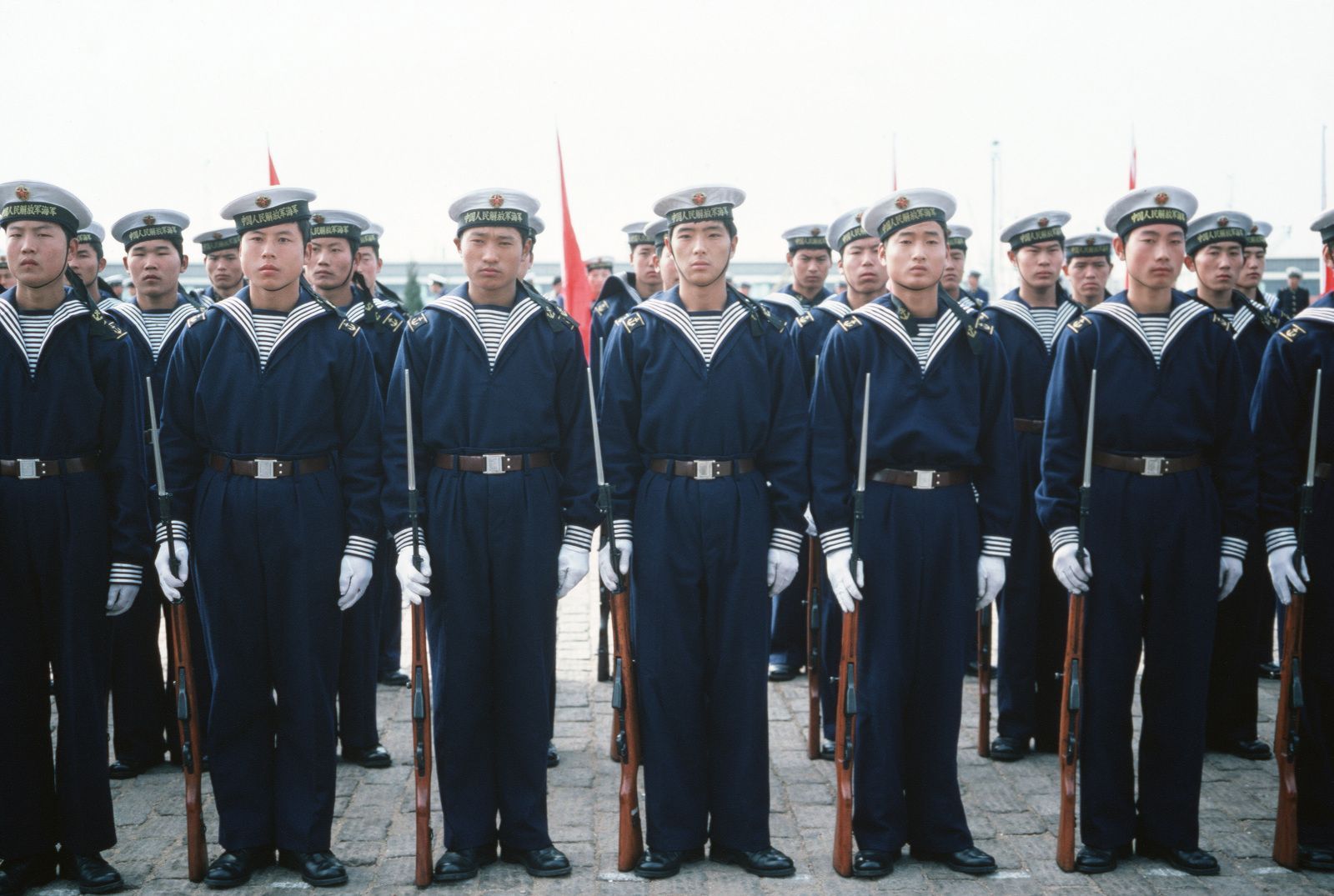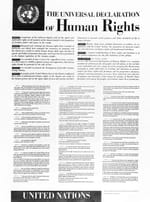[Versión en español] [Version en français]
On 6 June 2022, The Washington Post published an article quoting both Western and anonymous Chinese sources as specifying that the People's Republic of China was secretly building military, naval-type facilities in Cambodia for its exclusive use.
I highly recommend reviewing this recent piece of analysis to understand China's other moves in this vast space and its projection.
The military presence will be located in the northern part of Cambodia's Ream naval base in the Gulf of Thailand, where a groundbreaking ceremony is scheduled to take place this week (perhaps today, Thursday), according to the officials, although they differ only in one nuance, for while the Western official speaks simply of the construction of the Ream naval base, the unnamed Chinese official speaks of a portion of the existing Ream naval base being prepared for that purpose.
Following The Washington Post, we can see that authoritative Western sources said they expect the upcoming ceremony to acknowledge Chinese involvement in the financing and construction of the Ream naval base expansion, but not plans for its use by the People's Liberation Army. The expansion plans were finalised in 2020 and, significantly, envisaged the Chinese military having "exclusive use of the northern part of the base, while its presence would remain hidden", The Washington Post quotes a second official as saying.
The establishment of a Chinese naval base in Cambodia, so far the second overseas outpost after such a facility opened in 2017 in Djibouti, and the first in the strategically important Indo-Pacific region, is part of Beijing's strategy to build a network of military facilities around the world in support of its aspirations to become a truly global power. In this regard, having a facility capable of hosting large naval vessels west of the South China Sea would be an important element of China's ambition to expand its influence in the region and would reinforce its presence near key Southeast Asian sea lanes, moving closer in the pursuit of maritime competition with India and the rest of the Quad more generally.
Beijing is beginning to see the Indo-Pacific region (and Oceania) as either unwilling or potentially incapable of challenging China's interests, and through a combination of coercion, punishment and incentives in the diplomatic, economic and military arenas, believes it can get countries to bend to its interests, with the ultimate aim of taking over the Sinic and other space that makes China "the Middle Kingdom" in that region. This move by the People's Republic of China aims to gain a foothold on the Indochina peninsula to connect to the Hainan base and the artificial islands in the disputed South China Sea; as well as to increase the People's Liberation Army's presence in the vicinity of the (US-garrisoned) Strait of Malacca and to leverage the littoral countries into its own naval route network, which can now also make use of a staging post in the Solomon Islands. Even more than the Strait of Malacca, the US strategic community controls the Bashi Channel, the 156-kilometre-wide stretch of sea between Taiwan and the northernmost island of the Philippines. In fact, the US Navy's gateway to the disputed seas that China could keep the US out of with its own area interdiction, or A2/AD, capabilities.
The governments of Cambodia and the People's Republic of China have gone to great lengths to mask the presence of the Chinese military in Ream, according to the source cited by The Washington Post. For example, foreign delegations visiting the base are only allowed access to pre-approved sites. During these visits, Chinese military personnel at the base wear uniforms similar to those of their Cambodian counterparts or no uniform at all to avoid the suspicion of outside observers. When the US embassy's defence attaché in Cambodia visited the base last year, his movements were "very restricted", according to the same source.
Deputy Secretary of State Wendy Sherman visited Cambodia in 2021 and sought clarification from Cambodia on the previous year's demolition of two US-funded facilities at the Ream naval base, according to a State Department press release. The demolition took place after Cambodia rejected a US offer to pay for the renovation of one of them, according to a Pentagon report on Chinese military developments last year. That move, the report said, "suggests that Cambodia may have instead accepted [People's Republic of China] assistance in developing the base".
It is worth noting that in 2021, the "Vietnamese Common Friendship" building, a facility built by the Vietnamese, was relocated out of the Ream naval base. Recall that China and Vietnam have long had a tense relationship, with Hanoi and Beijing at loggerheads over competing territorial claims in the South China Sea for half a century, in addition to other elements of mistrust that have a longer historical tradition and remain.
All this secrecy around the base revolves around domestic factors, associated with Cambodian sensitivities and concerns about a backlash as a consequence, as there is basically a constitutional ban on foreign military presence in the country. As chair of the 10-member Association of Southeast Asian Nations (ASEAN), Cambodia this year wants to avoid the perception that it is an unwilling and self-serving cog in the wheel of a rising Beijing that, where it establishes the pecking order and power relations in its favour to the degree it wishes, is behaving according to a conception of power shared by the region by de facto proclaiming itself the hegemon.
Cambodia has been in an apparent position of ambiguity that the element of Ream's base might eventually elucidate. Thus, Cambodia was enthusiastic at the special US-ASEAN summit in Washington last month; in March, it joined 140 other countries in the UN General Assembly's vote to condemn Russia's invasion of Ukraine. Nevertheless, China's influence in Cambodia has grown, even rapidly, especially in recent years, with substantial Chinese aid and investment, a trend that has also caused some concern in Phnom Penh about over-dependence on Beijing.
Ultimately the People's Republic of China is seeking military facilities to support its naval, air, land, cyber and space power projection, and indeed, according to the aforementioned Pentagon report, is likely to have "considered a number of countries", listing more than a dozen, including Cambodia, Thailand, Singapore, Indonesia, Pakistan, Sri Lanka, Tanzania and the United Arab Emirates. A global network that could, according to the Pentagon report, "both interfere with US military operations and support offensive operations against the United States".
In fact, China has also attempted to establish a secret military facility in a port near Abu Dhabi in the United Arab Emirates. After meetings and visits by US officials, construction was halted, the Wall Street Journal reported. The current status of the project is unclear.
The report also adds that Chinese military scholars have claimed that such bases can allow for the deployment of military forces in theatre, and intelligence monitoring of the US military.
The unnamed Chinese source quoted by The Washington Post claims that the ground station technology for a BeiDou satellite navigation system was located on the Chinese side of the Ream naval base. Recall that BeiDou is China's alternative to the Global Positioning System or GPS run by the US Space Force, and has military uses including missile guidance.
The People's Liberation Army uses BeiDou's high-precision positioning and navigation services to facilitate the movement of its forces and the delivery of precision-guided munitions.
So it is in China's interest, hence the focus of this effort, to achieve a network of global bases, which on the one hand asserts power projection, and on the other allows it to build the means for global tracking and space assets.
Supporting this assertion is that China's navy is already the largest in the world by number of ships - while the US Navy has 297, China has 355 and is projected to reach 460 by 2030 - which is why a significant network of robust overseas facilities is also urgently needed, This is also why it needs a significant network of robust overseas facilities, as its ability to use them is diminishing rapidly and proportionally with distance from China, as well as specifying the elements of support provided at these naval bases, which we have already mentioned, in the form of naval warfare that China could be developing if we look at the type of its ships, along the lines of what we have seen in the Spratly Islands in the disputed South China Sea as of 2015, a sea with an area of 1.4 million square miles and over which Beijing has been claiming approximately 80-90%, Beijing's maps delimit this exclusive space with a curved dotted line, which it calls the ten-dotted line, through which about a third of world trade passes, and where Beijing has cemented and then militarised the small disputed islands, from Spratly to the Paracels. Hence, in November 2018, the People's Republic of China sought, for example, to strengthen its relations with the Philippines when Xi Jinping and Rodrigo Duterte met.
As I said, China has for some time now been intensely active in building artificial islands for military and civilian use on some atolls in the Spratly and Paracel archipelagos, and thereby also creating and extending Exclusive Economic Zones, among other strategic benefits, since control of this hydrographic basin, Beijing has been disputing with Vietnam, Taiwan, the Philippines, Brunei and Malaysia, which have also taken the path of building the same type of infrastructures built by Beijing, but with less intensity.
Beijing has led efforts to improve the so-called "ten points" in the South China Sea, and has done so through the "A Belt, A Street" infrastructure/commercial project, which is based on the development of the two routes: the "Silk Road Economic Belt", which runs overland through Central Asia and the Middle East to Europe, where it is making progress by sharing interests with the Russian establishment, which is asserting itself in the face of the new global competition for hegemony; and the "21st century maritime silk route", which starts from the coasts of China, passes through the Strait of Malacca, India, touches Africa and then enters the Mediterranean Sea on both shores of the Strait of Malacca, throwing tentacles towards Eastern Europe by relying on the Western Balkans, where it would meet its positions in Belarus, but also through the African Mediterranean, to merge with the first route.
On the other hand, having secured the Heartland front with Russia, from a geostrategic point of view, the 14,000-kilometre-long coastline of the People's Republic of China is the country's most vulnerable area. This is demonstrated by the sea invasions suffered by Western powers and Japan during the Opium Wars (1839-42 and 1856-60) and the First Sino-Japanese War (1894-1895). Beijing is accustomed to remembering these humiliating episodes, which marked the end of the imperial era, in order not to suffer further defeats. Moreover, the political and economic core of the People's Republic of China is located right on the east coast, whose main centres are Beijing, Shanghai and Hong Kong, launching a new vision that is running on data and choke points. For these reasons, President Xi Jinping has placed the transformation of the People's Republic of China into a maritime power already more than five years ago among the national security priorities.
An additional advantage on Beijing's part is the ability to create an Air Defence Identification Zone (ADIZ) in the South China Sea, the creation of which, generally speaking, does not violate any rule of international law, as each country has the right to determine it in the international airspace adjacent to its national airspace. This implies that any aircraft transiting the area must identify itself, declare the country of origin and announce the flight plan to the Chinese Ministry of Foreign Affairs.
Ultimately, the East China Sea and the South China Sea together constitute one of the world's most important geopolitical fault lines, the area where the strategic interests of China and the United States collide. Regarding the East China Sea, the People's Republic of China claims control over the Senkaku/Diaoyu Islands in dispute with Japan.
Prior to the Sino-Japanese War of 1894-1895, the Senkaku Islands belonged to China under the name Diaoyu. Subsequently, Japan controlled them until the 1940s. During the Pacific theatre of World War II, the region became the scene of violent clashes between the Americans and Japanese. After the bombings of Hiroshima and Nagasaki, Japan was forced to surrender. The islands remained under US control from 1945 until 1972, when they were returned to Tōkyō. Since then, Tōkyō has consistently asserted its desire to control the archipelago, in accordance with the peace agreement imposed on it by the victorious powers. According to the 1972 treaty, it is the Okinawa archipelago that is returned to Japan.
China spent a long time focusing on what I call "changing the ecosystem" in which its aspirations could grow and develop until they bore fruit while the fruits of its competitors, changed to enemies only at the opportune moment, withered precisely because of "changing ecosystem conditions". In the 1970s, a tacit agreement between China and Japan proposed to call the islands Senkaku in Japan and Diayou in China. This is why Deng Xiaoping and Zhou Enlai, who had much more pressing matters to deal with, had decided to leave any discussion to "future generations" to allow for the normalisation of relations between the two countries (the change of ecosystem). For forty years, the Senkaku / Diaoyu issue was closed (not without some regular contingencies).
Since 2012, China has periodically explored by entering Japanese waters (it did so also in February 2017) and in 2013 drew up an Air Defence Identification Zone, partially overlapping with the one defined by Tōkyō.
Which brings us to a view shared by certain circles in Beijing that advocates reopening the ownership of the entire Ryukyu archipelago (that is the Okinawa question) as perhaps the greatest obstacle to the expansion of Chinese naval power in the Pacific and a sign of a radical break with the past. By blocking its straits, Okinawa could in fact block China's access to the ocean, an aspect of a higher strategic nature: some of the US Navy's main bases in the Pacific are located in Okinawa, where on the other hand, issues of economic and social nuance or some version of its idiosyncrasies could be played out by Beijing against Tōkyō.
On the other hand, the Korean Peninsula, once a platform for Japanese invasions of China, is now the pivot on which the geopolitical balance between the People's Republic and the United States pivots. China cannot do without North Korea as a strategic buffer between itself and US troops located beyond the 38th parallel, in addition to South Korean troops. But at the same time, P'yŏngyang's nuclear build-up is a threat to stability on China's periphery.
This is why Japan (in addition to South Korea and Taiwan, of course), is acquiring an element of strength in terms of the strategy that is being adopted, and more so because of the different elements that are contained in this extraordinary analysis by Dr Jagannath P. Panda, which I recommend reading in closing this commentary.
My Latest Column “Asia’s Next Page” @JAPAN_Forward_ : https://t.co/lbjEdrTwJd How far would #Japan’s emerging dynamics with #NATO influence their geopolitical interests? What does it mean for the existing Indo-Pacific frameworks? @hcssnl @ycapsjapan @ISDP_SCSAIPA @ISDP_Sweden
— Jagannath Panda, 潘杰根 | Ph.D. (@jppjagannath1) June 9, 2022





